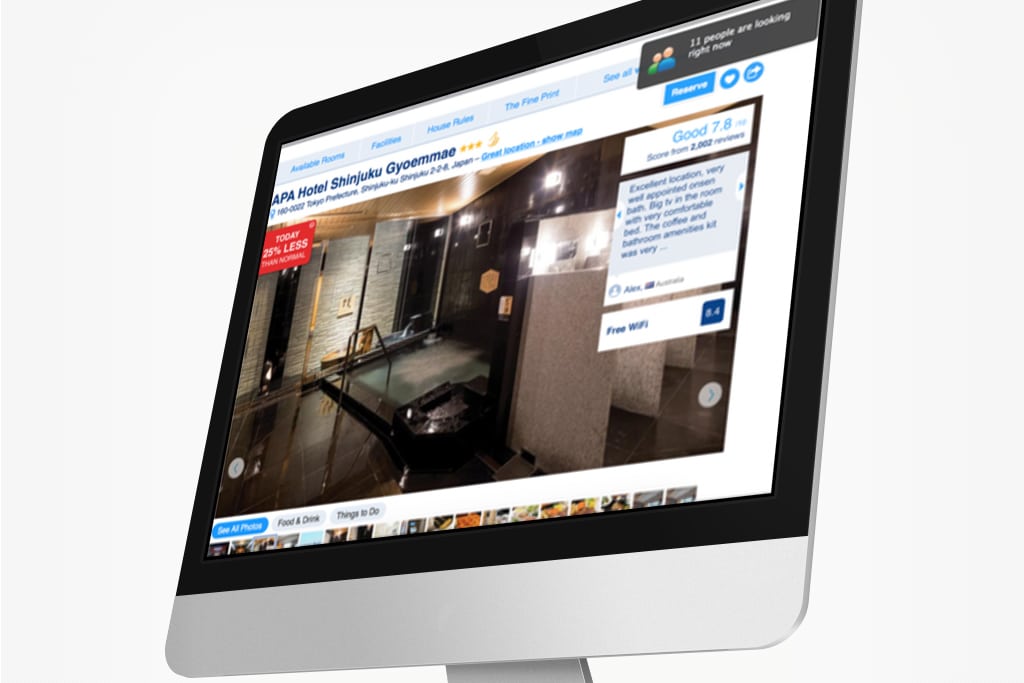Skift Take
Some travel brands have mastered the art of using FOMO to get us to buy right now. But there's value for some travelers in missing out, at least on the anxiety.
 Colin Nagy, head of strategy at Fred & Farid, a global advertising agency, writes this opinion column for Skift on hospitality, innovation, and business travel. “On Experience” dissects customer-centric experiences and innovation across hospitality, aviation, and beyond.
Colin Nagy, head of strategy at Fred & Farid, a global advertising agency, writes this opinion column for Skift on hospitality, innovation, and business travel. “On Experience” dissects customer-centric experiences and innovation across hospitality, aviation, and beyond.
Imagine holding your hand on a metal surface with low voltage electricity surging through it.
You notice something imperceptible, but it is not enough to register shock, rather a low flying unease and discomfort that you can’t quite put your finger on.
This feeling is how I have been describing the state of UX on the web and in mobile experiences: deeply rooted psychological machinations that create slow burning anxiety. The intention is to stir us toward action, without being overly recognized. This is particularly dire in the travel sphere, where some brands are working so hard to have seamless experiences in the real world, but still resort to cheap tactics online. And it isn’t only “hate selling,” aka the dreadful online upsell as my colleague and Skift founder Rafat Ali calls it, sometimes it goes much deeper.
While elements of this have existed on the Web since the early days, some of this “weaponization” of desire, attention, and anxiety began with the rise of social games made by the likes of Zynga. Friction points were created, and one could solve for the friction points by spending much more time and effort, or spending money. Turns out this is a good business model.
But it’s not all gaming. This type of UX is prevalent everywhere. Think about the bright red notification buttons on your email, or on Facebook. These are designed to create urgency in our brains, and move us to resolve them quickly, even if the payoff is the notification that someone invited you to play Candy Crush or a spam email from a retailer you visited once. The optimal state for these is to create recurring “muscle memory” to keep checking in and address these notifications.
Many people now have this behavior with Facebook. It is the equivalent of an ambient, absent minded gesture akin to opening the refrigerator door and gazing in, even when you’re not hungry. No wonder the platform (and its owned experiences) now command 50 minutes of user attention a day. It has become a subconscious habit, even when the actual payoff isn’t very alluring — like your uncle’s Trump rant or sunset photos from a long forgotten friend.
Ever booked travel online? If you’re reading this site I’m guessing you have. This tactic is even more overt: many sites use triggers to drive you toward action like “7 other people are looking at this room right now!” prompting a subconscious, primal competitive instinct to kick in and take the desired action. This was also the primary mechanism of flash sale sites like Gilt — limited time, exploding offers that take awareness to conversion while skipping steps in the marketing funnel.
The science is evolving quickly. People like Nir Eyal have written books on the science and psychology behind designing habit forming products. This is blending interaction design with deep seated elements of our primal brains. He outlines triggers, rewards, reinforcement, not unlike the familiar rats, levers and pellets from old psychological studies. The dopamine link between social media and our brains has been well documented.
Of course, some of these mechanisms are latent and somewhat hidden. Others are more obvious. overt. As the App Store becomes more cluttered the fight to become part of someone’s daily routine and home screen is prompting developers to make notifications more and more aggressive. Every news app, social app, fitness app or game is begging you to “allow notifications,” to open up the trojan horse of interruptions for trivial things. A notification for an actual breaking news alert is one thing, a notification for the fact a friend just joined the app and you should add them is another.
But there’s a burgeoning movement — frequently articulated in long, meandering Medium posts — about the movement to asynchronous communication. This means turning off all prompts and notifications and putting yourself back in control of what you see and when. Similar to how ad blockers were a response to the ad tech world out of control, this is a response to brands and tech experiences being in your face, and ultimately leading to diminished experiences.
With the rise of meditation apps, mindfulness and people try to wrest back control of their headspace and create space for day dreams, expect these backlash movements to grow. People are fed up. And the e-commerce managers, travel marketers and those looking to engage and capture the attention of customers should be very aware.
The Daily Newsletter
Our daily coverage of the global travel industry. Written by editors and analysts from across Skift’s brands.
Have a confidential tip for Skift? Get in touch
Tags: On Experience, otas, user experience
Photo credit: Booking.com is a master of letting consumers know who's booking what, how much they're paying, and how many rooms are left right now. That's not always a good thing.
